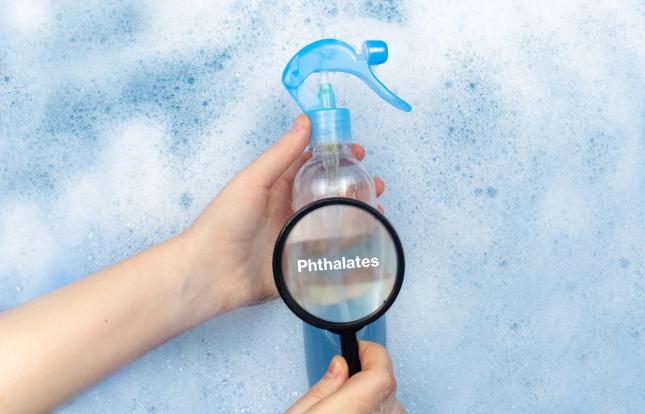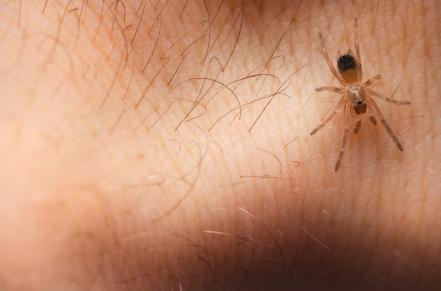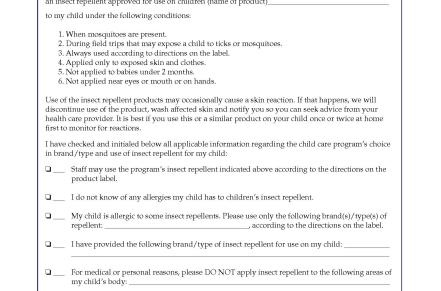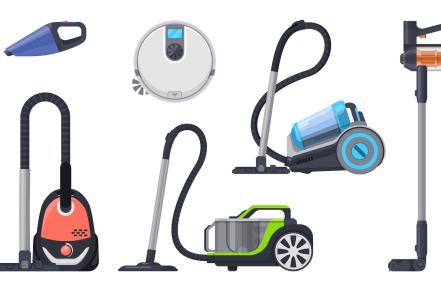Existing California laws prohibit production and distribution of products containing certain chemicals that are harmful to health. Beginning January 1, 2009, a new law in California bans chemicals called phthalates in toys and child care products used by children under age three.
What are phthalates?
Phthalates (pronounced “tha-lates”) are a class of widely used oily chemical compounds used in plastic to improve flexibility and durability. They are also used in cosmetics and personal care products to bind fragrance to the products. With the universal use of phthalates over the last several decades and worldwide annual production of more than a billion pounds, phthalates are common in the environment. For example, they are found in indoor air and dust. Studies show that nearly everyone carries some level of phthalates in their body.
How are they used?
Phthalates are used as plastic softeners to help mold and smooth toys and other plastic products. Chewable teething rings, pacifiers, squeezable rubber duckies and soft plastic books are examples of such products used by young children. Phthalates are also frequently used in personal care products, like perfumes, hairsprays, lotions and shampoos, paint pigments, caulk, adhesives, nail polish, and lubricants.
What are the health problems?
Animal studies link phthalates to birth defects, hormonal disruptions and cancer. Some of the harmful health effects of phthalates include early puberty in girls, premature delivery, male infertility and genital defects.
Children are mainly at risk
Phthalates put the health and safety of growing children at risk. In the critical stages of their development children are particularly vulnerable to chemicals in their environment. Their immature bodies cannot protect them from phthalates and other toxic chemicals. Phthalates can cross the placenta in a pregnant woman and therefore prenatal exposure is possible. Infants can be exposed from breastfeeding and phthalates can also get into the body when children mouth, suck, or chew on phthalate-containing toys or other objects. A recent study in Pediatrics found that infants, especially those younger than 8 months, exposed to baby lotion, powder, and shampoo had increased levels of phthalates in their urine.
Steps to limit the exposure
- Be careful with plastic in the kitchen. Some plastics that are used in food storage and cooking have the potential to leak phthalates into food. Whenever possible, use plastic alternatives such as glass, ceramic (lead-free) and stainless steel. Use glass or ceramic to microwave food and beverages. Wrap foods in butcher paper, waxed paper or paper towels.
- Avoid plastic toys and products. Be aware that plastic products such as squeeze toys, rattles, teethers, pacifiers, sippy cups, and baby bottles may contain phthalates . Use toys and books made with natural wood, paper, cloth, or metal.
- Look for products that state “no phthalates” or “no bisphenol A (BPA): Avoid using plastics that are not identified on the packaging.
- Avoid using baby lotion, powders and shampoos that haven’t been tested (see Environmental Working Group’s Guide to Children’s Personal Care Products, below)
References and Resources:
American Academy of Pediatrics. (2003). Pediatric exposure and potential toxicity of phthalate plasticizers. Pediatrics, 111: 1467-1474.
American Academy of Pediatrics, (2007) Policy Statement: Pediatrics, 119:1031
Sathyanarayana, S., C. J. Karr, et al. (2008). Baby care products: Possible sources of infant phthalate exposure. Pediatrics 121: e260-8.
Environment California online at www.environmentcalifornia.org







